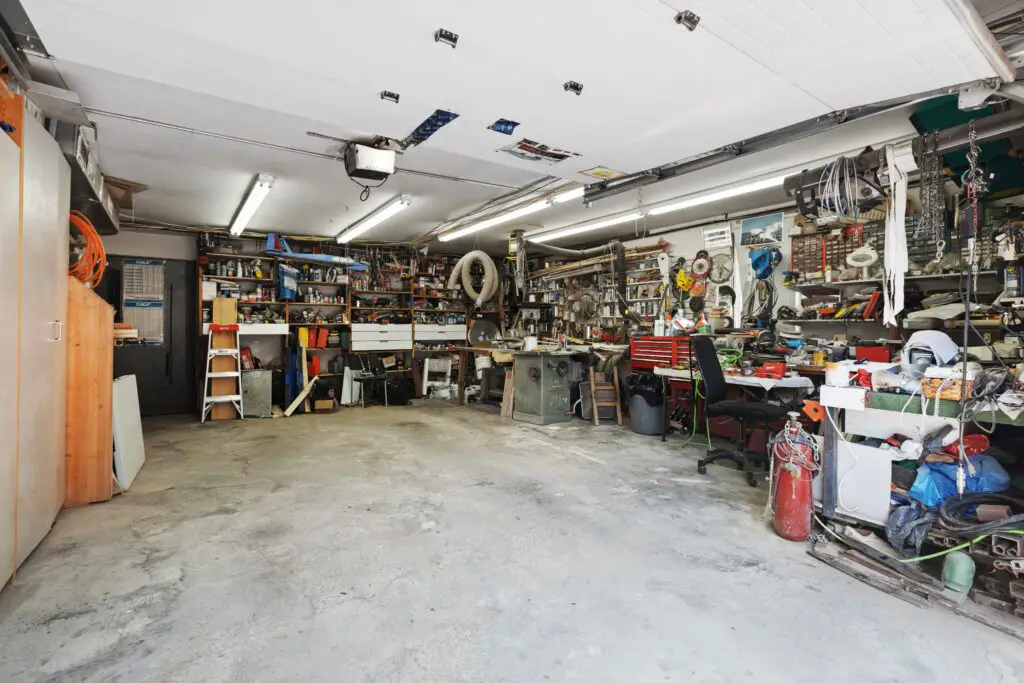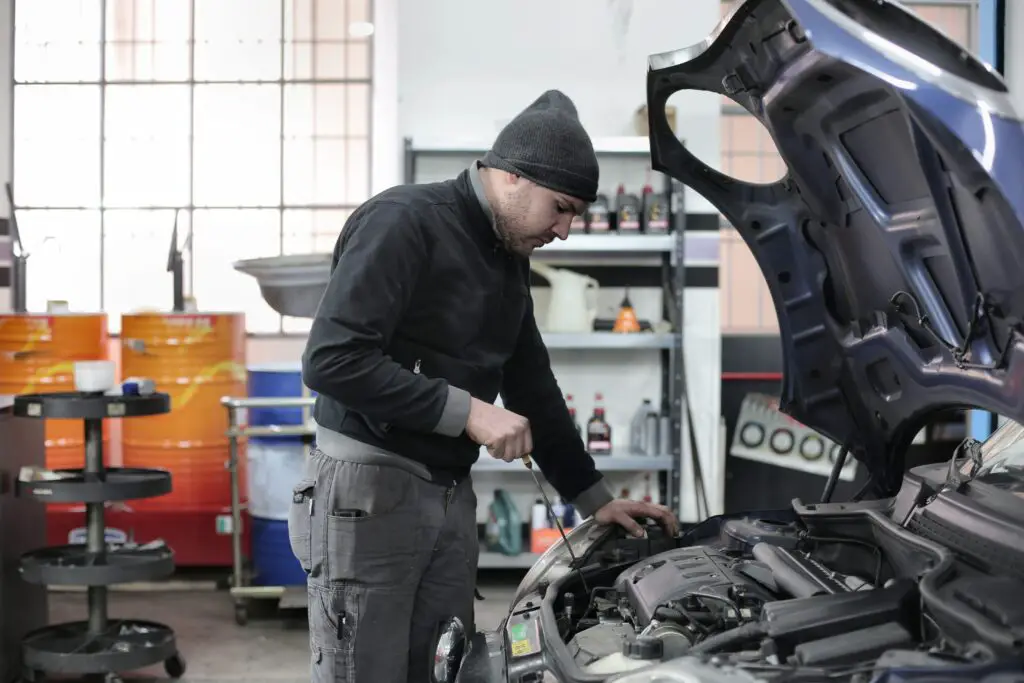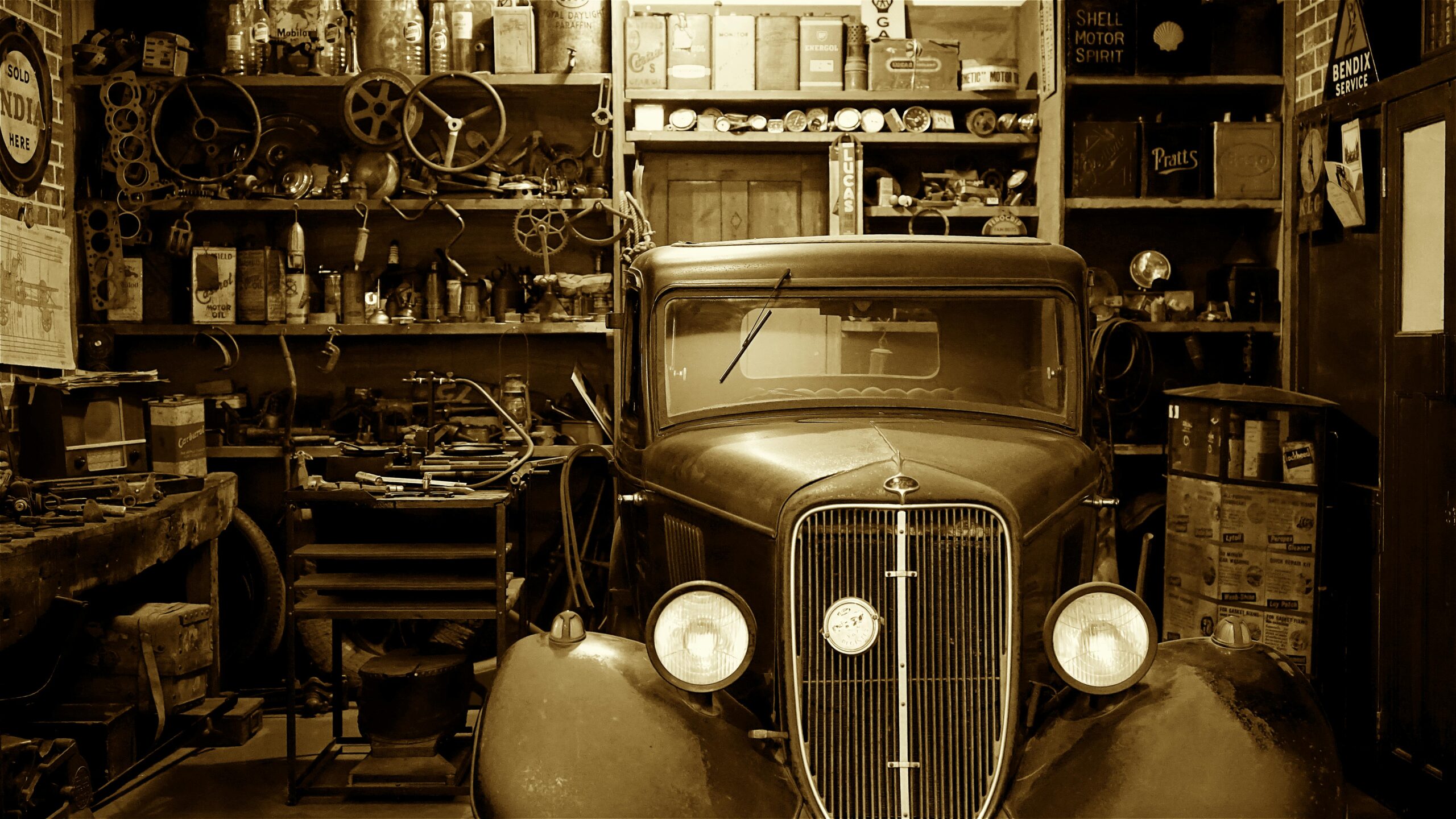Is your garage a cluttered mess, leaving you frustrated and struggling to find what you need? Fear not! With the right strategies and organizing your garage, you can transform your garage into a well-structured space that maximizes every inch.
In this comprehensive guide, we will explore valuable tips and techniques to help you organize your garage and make the most of its space. From decluttering to utilizing clever storage solutions, get ready to reclaim your garage and enjoy a more functional and efficient space.
I. Assessing Your Needs

Before diving into the process of organizing your garage, it’s crucial to assess your specific needs and requirements. Take the following steps to ensure you create an organized space that caters to your unique situation.
- Determine the purpose of your garage: Are you using it solely for parking your vehicles, or do you also need storage space for tools, sports equipment, or seasonal items?
- Evaluate the items you need to store: Make a list of the items you currently have in your garage. Categorize them into groups such as tools, gardening equipment, sports gear, and so on. This will help you determine the amount of storage space required for each category.
- Consider future needs and potential uses: Anticipate any changes or future requirements for your garage. For example, if you plan to take up a new hobby or have children who will need additional storage space for their belongings, it’s essential to consider these factors during the organizing process.
II. Planning and Preparation

Once you have assessed your needs, it’s time to start planning and preparing for the organization process. This stage is crucial for creating an effective layout and ensuring you have the necessary tools and materials.
- Set specific goals for organizing the garage: Define clear objectives for your garage organization project. Do you want to create designated zones for different purposes? Are you aiming for a clutter-free and visually appealing space? Setting goals will help you stay focused and motivated throughout the process.
- Measure the available space and take note of dimensions: Before purchasing any storage solutions, measure the dimensions of your garage. Take note of any obstacles, such as doors, windows, or electrical outlets, that might affect the layout. This information will help you make informed decisions about the size and placement of storage units.
- Create a layout or floor plan of the garage: Use graph paper or a digital design tool to sketch a layout of your garage. Allocate space for different zones, such as a workspace, storage area, and parking space. Visualizing the layout beforehand will enable you to make better decisions about storage solutions and ensure optimal space utilization.
III. Sorting and Decluttering

The first step towards an organized garage is decluttering and purging unnecessary items. Sorting through your belongings lets you identify what you truly need and frees up valuable space for more important things.
- Categorize items into groups: Begin by categorizing your belongings into groups based on their purpose or use. Separate tools from sports equipment, gardening supplies from automotive items, and so on. This step will help you identify duplicates, unused items, or things that no longer serve a purpose.
- Assess the usefulness and sentimental value of each item: As you sort through your belongings, evaluate the usefulness and sentimental value of each item. Ask yourself if you have used the item in the past year, and if not, consider letting it go. Additionally, determine if any items hold sentimental value, as these might require special consideration.
- Discard or donate items that are no longer needed or used: Dispose of broken or non-functional items that cannot be repaired. Donate items that are in good condition but no longer serve a purpose for you. Consider local charities, schools, or organizations that may benefit from your donations.
- Consider selling valuable items that are no longer needed: If you have valuable items that are no longer useful to you, consider selling them online or organizing a garage sale. This not only helps declutter your space but also allows you to make some extra money.
IV. Creating Zones

Creating designated zones within your garage helps maximize space and enhances overall functionality. It ensures that everything has its place and makes it easier to find and access items when needed.
- Divide the garage into functional zones: Based on your needs and the available space, divide your garage into different zones. Common zones include a workspace for DIY projects, a storage area for tools and equipment, a sports gear zone, and a parking zone for vehicles.
- Allocate appropriate space for each zone based on the frequency of use: Consider the frequency of use for each zone when allocating space. Items that are used regularly should be easily accessible, while those used infrequently can be placed in less accessible areas or overhead storage.
- Ensure clear pathways and accessibility to each zone: Maintain clear pathways within your garage to ensure easy access to each zone. Avoid blocking access to frequently used items or creating cramped spaces that hinder movement. This will enhance safety and convenience in your garage.
V. Utilizing Wall Space

Walls often go underutilized in garages, but they offer excellent opportunities for storage and organization. By utilizing wall space, you can free up valuable floor areas and keep items easily accessible.
- Install wall-mounted shelves, cabinets, or pegboards for storage: Install sturdy shelves or cabinets on your garage walls to store frequently used items. Adjustable shelves allow for flexibility in organizing various items of different sizes. Alternatively, pegboards provide a customizable solution for hanging tools and smaller items.
- Utilize hooks, hangers, and racks: Install hooks, hangers, and racks to hang tools, bicycles, ladders, and other items. This keeps them off the floor, saves space, and prevents accidents caused by tripping over scattered items.
- Consider using magnetic strips or tool organizers: Magnetic strips can be attached to the wall to hold metal tools, while tool organizers provide specific slots or compartments for different tools. These solutions keep your tools easily visible, accessible, and organized.
VI. Optimizing Overhead Space

One often overlooked area for storage is the overhead space in your garage. By utilizing this area wisely, you can store items that are not frequently used, leaving more room for everyday essentials.
Install overhead storage racks or shelves: Overhead storage racks or shelves are a great way to utilize the vertical space in your garage. They provide ample storage for items such as seasonal decorations, camping gear, or bins containing infrequently used items.
Use sturdy storage containers or bins: When storing items overhead, use sturdy storage containers or bins to ensure safety and protection. Label the containers clearly for easy identification when needed.
Ensure proper weight distribution and safety: Be mindful of the weight of items stored overhead and distribute the weight evenly across the storage racks or shelves. It is essential to follow the manufacturer’s guidelines and ensure the proper installation of the overhead storage system for safety purposes.
VII. Maximizing Floor Space

Efficiently utilizing the floor space in your garage is crucial for creating a well-organized and functional environment. Implement these strategies to make the most of your garage’s floor area.
- Use stackable storage bins or modular shelving units: Stackable storage bins or modular shelving units are excellent solutions for storing items on the garage floor. These options provide vertical storage and can be customized based on your needs. Choose clear bins for easy identification of the contents.
- Consider installing a Slatwall system: A Slatwall system is a versatile storage solution that allows you to hang various accessories and shelves. It maximizes wall space and offers flexibility in organizing items such as garden tools, cleaning supplies, and sporting equipment.
- Utilize under-shelf or under-cabinet storage solutions: Make use of the space under shelves or cabinets by installing hooks, magnetic strips, or small baskets. These additions provide extra storage for lightweight items such as gloves, small tools, or cleaning supplies.
VIII. Labeling and Organization

Maintaining an organized garage is essential for long-term success. Proper labeling and organization systems ensure that everything has a designated place, making it easier to find items and maintain order.
- Clearly label storage containers, shelves, and zones: Labeling is crucial for easy identification of items. Use waterproof labels or tags to clearly mark storage containers, shelves, and zones within your garage. This simple step will save you time and frustration when searching for specific items.
- Group similar items together: Keep similar items together to maintain organization. For example, store all automotive tools in one area, gardening equipment in another, and so on. This helps streamline the process of finding what you need.
- Consider using color-coded labels or tags: Color-coded labels or tags can be particularly helpful when organizing and differentiating between various categories or zones in your garage. Assign a specific color to each category, making it easier to locate items at a glance.
IX. Maintenance and Upkeep

Organizing your garage is not a one-time task but an ongoing process. Regular maintenance and upkeep are necessary to sustain an organized space. Follow these guidelines to ensure your garage remains clutter-free and functional.
Regularly clean and declutter the garage: Schedule regular cleaning and decluttering sessions to prevent accumulating unnecessary items. Set aside time every few months to evaluate your belongings and discard or donate anything no longer needed.
Create a system for ongoing maintenance: Establish a system for ongoing maintenance, such as a monthly or quarterly review of your garage. Use this time to reorganize, clean the space, and identify any repairs or adjustments needed.
Adapt and adjust the organization as needs change: As your needs and circumstances change, be willing to adapt and adjust the organization of your garage accordingly. Reassess your storage solutions and layout periodically to ensure they continue to meet your evolving requirements.
Conclusion
Organizing your garage and maximizing space is an achievable goal with the right strategies and dedication. By assessing your needs, planning effectively, and utilizing clever storage solutions, you can transform your garage into a functional and organized space. Remember to maintain regular upkeep and adapt as your needs change. Embrace the tips provided in this comprehensive guide and enjoy the benefits of an organized and clutter-free garage.
Frequently Asked Questions (FAQs)
1. How can I maximize space in my garage?
To maximize space in your garage, start by decluttering and purging unnecessary items. Create designated zones for different purposes, utilize wall space by installing shelves, cabinets, and hooks, and consider overhead storage racks. Make efficient use of the floor space by using stackable storage bins or modular shelving units. Proper labeling and organization systems also help maintain an organized garage.
2. What are some tips for organizing a small garage?
Organizing a small garage requires smart utilization of available space. Utilize wall space with wall-mounted shelves, pegboards, and hooks. Consider overhead storage racks and make use of stackable storage bins or modular shelving units on the floor. Create clear zones for different purposes and prioritize essential items.
3. How do I maintain an organized garage?
To maintain an organized garage, establish a regular cleaning and decluttering schedule. Set aside time every few months to evaluate your belongings and discard or donate items that are no longer needed. Create a system for ongoing maintenance and adapt the organization as your needs change.
4. What should I do with items I no longer need?
For items you no longer need, consider donating them to local charities, schools, or organizations. If you have valuable items, you can also sell them online or organize a garage sale. Properly dispose of broken or non-functional items that cannot be repaired.
5. How can I prevent my garage from becoming cluttered again?
To prevent your garage from becoming cluttered again, establish good habits of regular cleaning, decluttering, and organization. Avoid accumulating unnecessary items, and periodically evaluate your belongings. Adapting and adjusting the organization as your needs change will help you maintain an organized and clutter-free garage.



